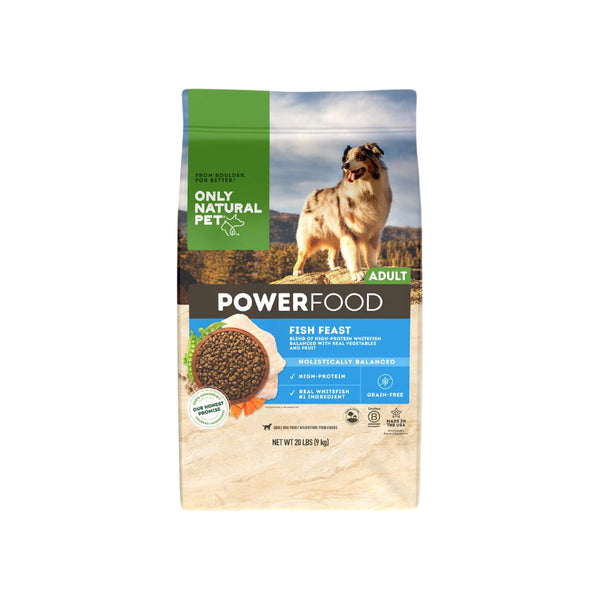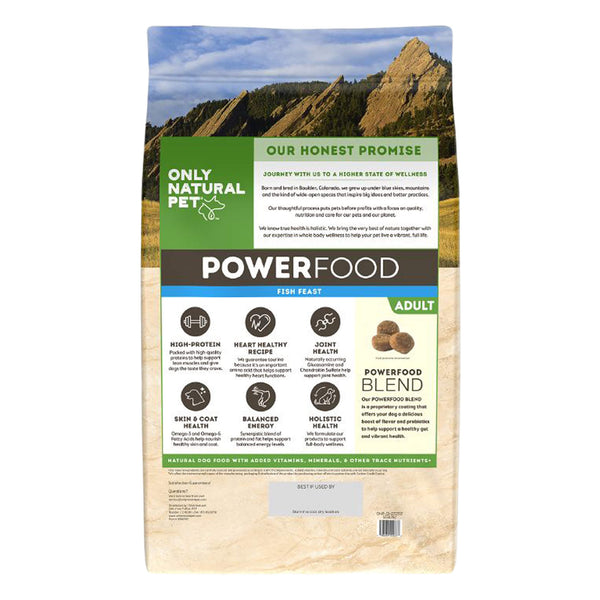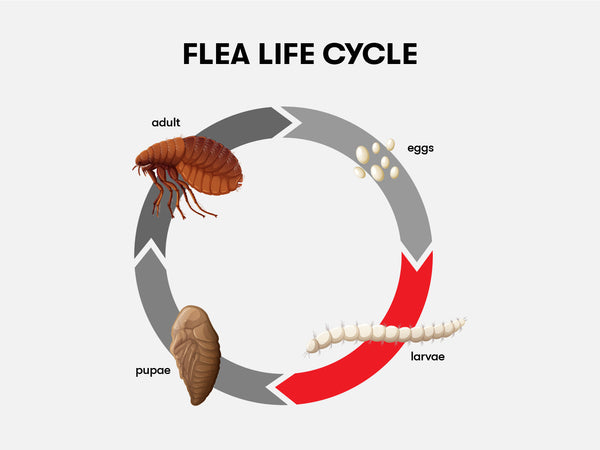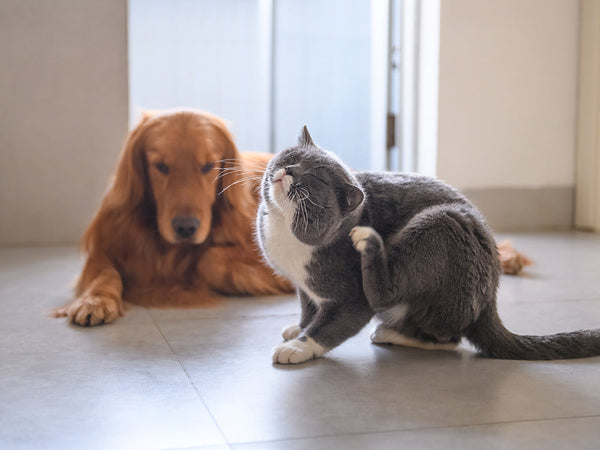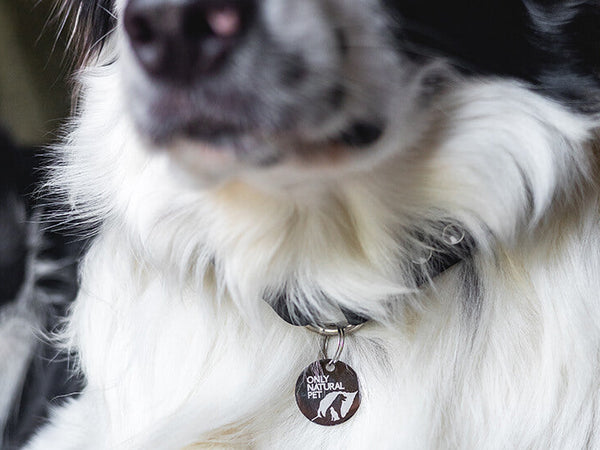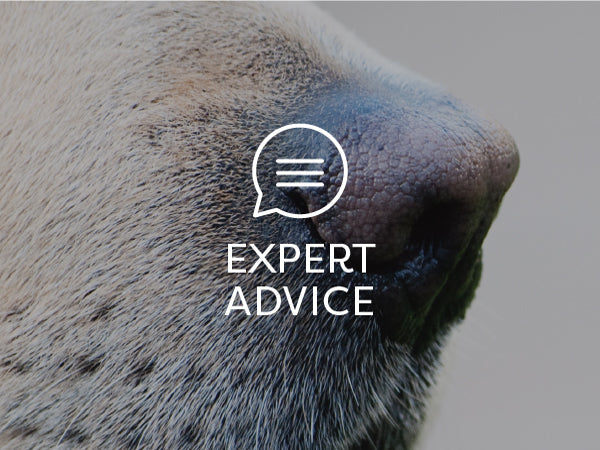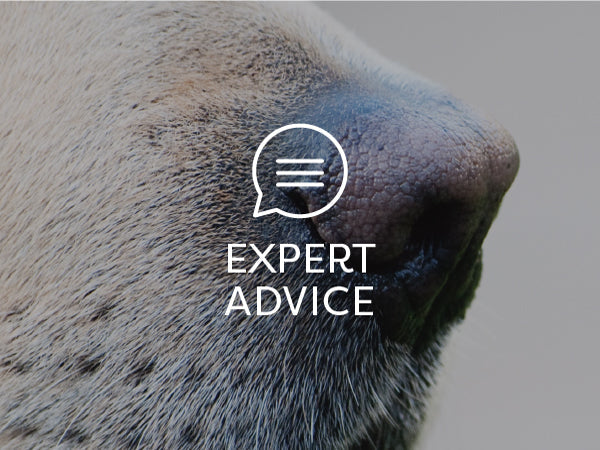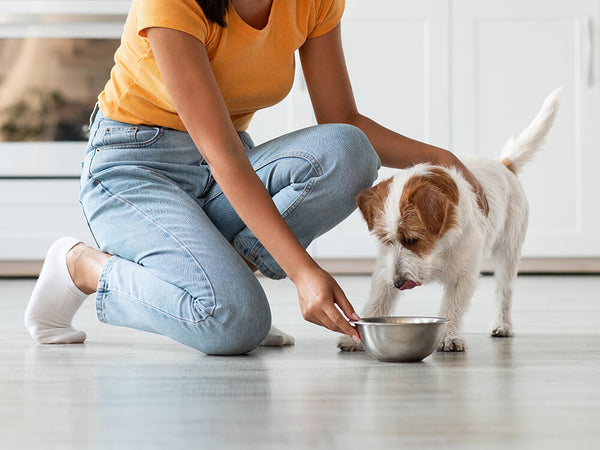What Can I Feed My Dog with Skin and Coat Problems?
Written by: Richard Rowlands, Pet Health Expert
Many dogs will encounter skin and coat problems at some point in their lives. While these can stress out pet parents, such issues can often be solved with some dietary adjustments. This is because proper nutrition in important to help keep your dog's skin and coat healthy.
In this post, we'll take a look at common dog skin conditions, why and how they come about, and what to feed dogs with skin problems.
Common Skin & Coat Problems in Dogs
If your dog is suffering from skin and coat issues, your holistic veterinarian may diagnose them with one (or more!) common problems. Many of these are or can be secondary to an underlying issue, so that’s why you and your pup might be dealing with more than one problem at a time.
Here’s a quick rundown of some of the top common skin and coat diagnoses in dogs.
Environmental Allergies
Just like us owners, dogs can have allergies to dust, pollen, and mold. Allergies can be seasonal or present year-round depending on the triggers. These can result in excessive licking or chewing of paws and other reachable areas, higher than normal hair loss, and scratching.
Bacterial Skin Infections
A common form of pyoderma (meaning “pus in the skin”). They’re usually superficial, that is, confined to the upper layers of the skin, and often secondary to other issues. Bacterial skin infections generally display as red, raised and pus-filled pimple-like papules or pustules that form on the skin. Other signs of this sort of issue include circular crusts, dry or flaky patches of skin, hair loss, and itching.
Seborrhea
Also known as seborrheic dermatitis, it comes in two forms. Dry and flakey, which we commonly refer to as dandruff, and an oily version that presents as greasy, scaling skin and even fur. It’s usually a secondary issue. Dogs suffering from this may feel itchy or obsessively lick affected areas if they can reach them.
Parasites
Fleas and ticks are the most common parasites we think of when it comes to dogs, but other unwelcomed guests on (or in) your dog’s body such as mites and intestinal worms can be contributors to skin and coat issues. One common parasite infestation that causes intense itching, red skin, sores, and hair loss is mange, also known as canine scabies.
Immune-Mediated & Hormone-Related Skin Conditions
Connected to issues concerning the immune system and hormone levels in your dog, skin conditions of this variety often require various tests to pinpoint and treatment strategies from qualified vets and even specialists. These are primary causes of skin and coat issues that, once identified and addressed, will help deal with secondary issues.
Food Hypersensitivity, Intolerance, and Allergies
The wealth of knowledge and investigation into animal nutrition continues to expand exponentially as science dives deep into the food we’re feeding our four-legged friends. These issues can occur at any age and may be hereditary or caused by inflammation, infection, or even some medications.
The most common offenders are beef, milk products, and wheat. They’ll display in a variety of ways from excessively watery eyes that cause tear-staining to redness and rashes, and will prompt itching and licking, as well as hair loss.
Nutritional Deficiency
Plain and simple, if your dog isn’t receiving the nutrients they need, they won’t be able to maintain good skin health or a nice-looking coat. This is why a biologically and age-appropriate diet composed of high-quality ingredients is paramount. The right kinds and amount of protein, fats, vitamins, and minerals are all essential. In the next section we’ll explain why.
Why Nutrition Is Important for Skin and Coat Health
For over 70 years now, vets and pet experts have been preaching the need to examine nutritional factors when a dog’s skin or coat is in trouble. Let’s take a closer look at the different areas of a dog’s nutritional needs to understand their importance when it comes to skin and coat health and appearance.
Protein
Proper protein intake is vital to your dog’s skin and coat health. Anywhere from 25 to 30% of daily protein intake according to some reports, goes towards this job. This makes sense since hair is composed of 95% proteins. Lack of protein can also be a problem for skin, making it thinner and less supple. Protein can be animal, plant, or even insect based and should make up from 18 to 29% of food intake depending on your dog’s age.
Fat
Essential fatty acids (EFAs) are only available to dogs through their diet. One popular type, Omega-3, is going to help regulate the skin’s oil production, and may also calm itching and scratching thanks to its anti-inflammatory effects. An added benefit is making coats shiny and lustrous. Fish oil is one popular source, while flaxseed oil is gaining in popularity as a plant-based alternative. Over supplementation has been linked to oily seborrhea though, so don’t overdo it.
Vitamins
Getting the right vitamins into your dog’s diet will help them maintain good skin and coat health. Here, the whole alphabet seems invited to the party, with Vitamin C, Vitamin D, Vitamin E, and Vitamin K all playing essential roles. Many commercial foods and treats will list how much of a dog’s daily recommended intake is included per serving, so check the packaging. It’s important not to supplement vitamins without the guidance of a vet, however, as too much of any of these can cause side-effects and problems.
Minerals
There are certain naturally occurring elements in our world that a dog’s body needs to stay happy and healthy. And this includes their skin and coat. Some minerals help your dog process other nutrients, like how zinc helps with the metabolizing of fat and proteins. While others, such as copper, are connected to tissue health and even the pigment of skin. It might be harder to find exact info on these from nutritional labels, so consult a vet if you’re concerned that mineral deficiencies have become an issue for your pup.
How to Support Your Dog's Skin and Coat Health
Considering the various components of your dog’s diet and how they’re getting their protein, fat, vitamins, and minerals will go a long way to preventing dog skin conditions and ensuring good skin and coat health.
Foods
When it comes to the type of food you feed your dogs, options abound. Commercially available choices include kibble, dehydrated, freeze-dried, and cold pressed food. There are even commercially produced raw and ready-made options now.
Some foods will be specifically geared towards skin and itch. They’ll feature nutritious ingredients such as salmon, that are rich in Omega-3 fatty acids and, as we learned, are essential in a dog’s diet.
Treats
As pet owners, we love to treat our fur kids with some delicious snacks. And they come in handy for training as well. There are many treats that are excellent for skin and coat health by virtue of their ingredients or thanks to special formulations. Adding some to your dog’s diet can have noticeably beneficial results. Read the labels for serving instructions, as some have different recommendations for daily limits.
Toppers
The selection of natural food toppers available continues to grow and there are some great options for improving skin and coat health. In addition to being a great way to get picky eaters to chow down on their main meals, toppers can be packed with extra protein, fats, vitamins, and minerals designed not only to make mealtime tastier, but also promote skin and coat health.
Supplements
Sometimes even a well-rounded diet needs a little help, and this is where supplements can provide the support a dog’s skin and coat may need. They will come in a variety of forms including liquid, usually oil, or powders that can be mixed in with their food at mealtime. If you’re thinking about adding supplements to your dog’s diet to help with skin and coat health, but are unsure of which is best, consult your vet for advice.
Conclusion
While skin and coat problems in dogs can be a sign of more serious issues, sometimes tweaks to their diet will be enough to give them healthy skin and a beautiful coat.




